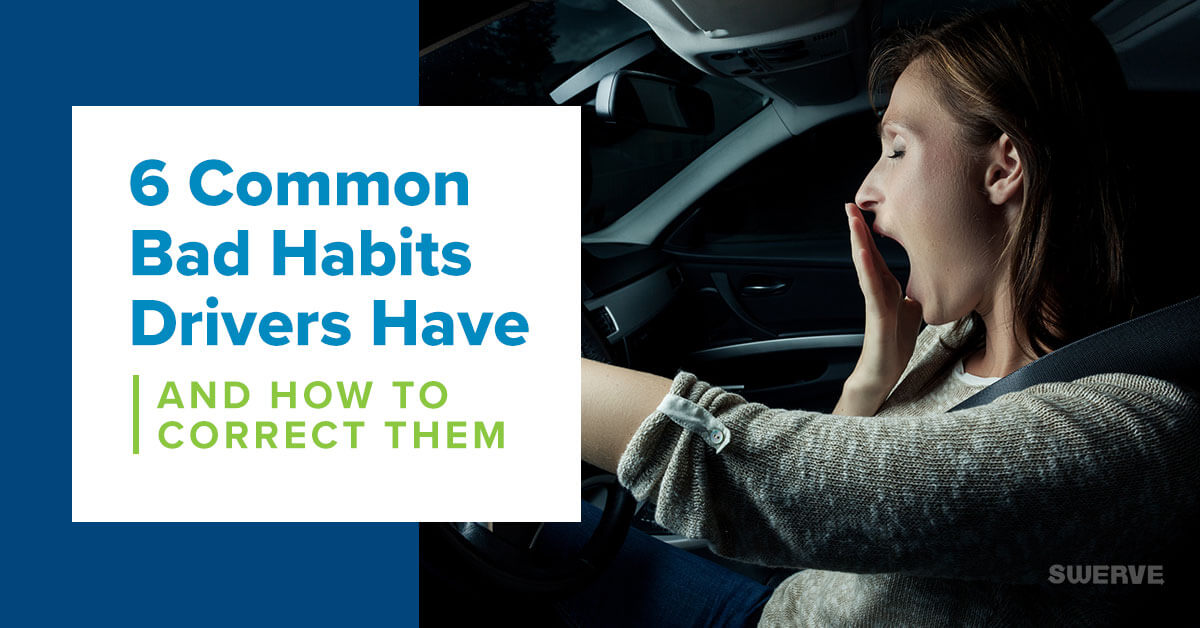 As drivers become comfortable behind the wheel, they tend to pick up bad habits. Some are harmless while others are very dangerous to themselves and others on the road. Luckily, these bad habits can be corrected. Here are six of the most common habits drivers have and how they can be corrected.
As drivers become comfortable behind the wheel, they tend to pick up bad habits. Some are harmless while others are very dangerous to themselves and others on the road. Luckily, these bad habits can be corrected. Here are six of the most common habits drivers have and how they can be corrected.
1. Right of Way Errors
Approaching an intersection is dangerous when not everyone knows who has the right of way. The laws were written to help everyone proceed through these traffic patterns safely, but too many drivers do not know who should go and just enter the intersection. Correct this mistake by reviewing the rules and then always proceed cautiously. It is always better to be observant and yield to anyone who enters the intersection, even if you feel you have the right of way. It is better to be alive.
2. Using Turn Signals
Drivers who become too comfortable behind the wheel often get lazy when it comes to using their signal. It is vital to use them when changing lanes, making a turn, pulling off the road, or even when waiting for a parking spot. This lets other drivers and passengers know what your intentions are and help them plan accordingly. Correct the bad habit by committing to signal, making a conscious effort to make signaling second nature.
3. Driving with Proper Documentation
Any time a driver is operating a vehicle, they are required to have their driver’s license with them. One bad habit many drivers pick up is that they run to the car without their license. Try to always remember to bring your license with you. Other documents to keep in the car are your vehicle registration and proof of insurance.
4. Observing Signs
Even when drivers are watching the road, they aren’t always observing. A bad habit that drivers pick up is driving in auto-pilot mode and not paying enough attention to important warnings and information on posted signs. Notice signs that indicate speed limits, upcoming turns, and warnings that are up ahead on the road. It can make all the difference in keeping you and your passengers safe.
5. Driving Drowsy
While most drivers are aware of the dangers of driving under the influence of drugs and alcohol, but there is another danger just as great; driving drowsy. When drivers are becoming tired, they often commit to pushing through and just getting where they need to go. Instead, if you notice that you are getting too tired, pull off and find ways to wake up or find a place to sleep.
6. Distracted Driving
Becoming comfortable behind the wheel means that drivers can get reckless. When cargo isn’t secured and spills around, a phone is dropped under a seat, or a conversation with passengers becomes heated, drivers become distracted and don’t pay proper attention to the road in front of them and their surroundings. Limit distractions in the car. Pull off the road to pick up dropped items, make a call or send a text. Don’t let yourself become so negligent that you take your eyes off the road and risk crashing your car.
Making a commitment to stay safe on the road includes not picking up some of these bad habits. Try to do a self-evaluation each year on your driving and notice what you can improve. Go back to your teen driver’s education notes and remind yourself about the laws and defensive driving tips. By always recommitting to be a safe driver, you are already working on being a safer driver.



